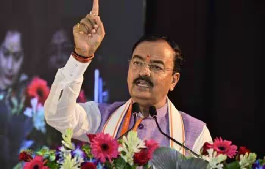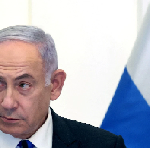Political tensions are running high in Uttar Pradesh (UP) as Deputy Chief Minister Keshav Prasad Maurya’s recent meetings with key allies, combined with Chief Minister Yogi Adityanath’s significant bureaucratic reshuffle, have stirred the political landscape. Amidst the backdrop of these developments, a crucial meeting is scheduled in Delhi on July 27th. This meeting aims to address the ongoing unrest within the state’s political and administrative framework. Here are ten key points outlining the current situation in UP:
1. Maurya’s Strategic Meetings
Deputy Chief Minister Keshav Prasad Maurya has intensified political speculations by meeting with significant allies, including Om Prakash Rajbhar, the President of the Suheldev Bharatiya Samaj Party, and Sanjay Nishad, the President of the Nishad Party. These meetings are seen as strategic moves, potentially indicating shifts in political alliances.
2. Absence in Yogi’s Meeting
On July 22, 2024, Chief Minister Yogi Adityanath held a meeting in Azamgarh, notably missing was Om Prakash Rajbhar. Instead, Rajbhar met with Maurya in Lucknow, further fueling political speculation. Their meeting, which lasted for hours, went viral on social media, showing the deepening political discussions between them.
3. Meeting with Sanjay Nishad
Maurya’s recent interaction with Sanjay Nishad has added to the political intrigue. The meeting lasted for about half an hour, sparking various interpretations regarding its significance. Additionally, Maurya has also met with Dara Singh Chauhan, further hinting at possible political re-alignments.
4. Emerging Fissures Post-Lok Sabha Results
Internal rifts within the UP BJP have become apparent since the Lok Sabha election results. Maurya’s absence from cabinet meetings since June 4 and his frequent visits to Delhi to meet top leaders suggest underlying tensions with Chief Minister Yogi Adityanath.
5. Transfers Amid Turmoil
The Yogi government has executed significant transfers of bureaucrats amid the political turbulence. On Wednesday, a dozen PCS officers were transferred, indicating an administrative shake-up aimed at consolidating control and ensuring effective governance.
6. Key Bureaucratic Reassignments
Notable reassignments include Siddharth being appointed as the new ADM FR of Kanpur, Manglesh Dubey as ADM Administration of Noida, and Vimal Kishore Gupta as ADM Judicial of Meerut. Such reassignments are seen as efforts to streamline administrative functions amidst political uncertainties.
7. IAS Officers Transferred
Alongside PCS officers, three IAS officers were also transferred. Prerna Singh was appointed as ACEO of Greater Noida, Sudhir Kumar as Municipal Commissioner of Kanpur, and Deeksha Jain as CDO of Kanpur Nagar. These changes reflect the government’s attempt to stabilize the administrative framework.
8. Previous Transfers
Just two days prior, on Monday, three other IAS officers were transferred. Manoj Kumar was appointed as Additional Commissioner of Bareilly Division, Shailesh Kumar was given additional charge as RFC, and Dr. Akhilesh Kumar Mishra was made Joint Election Commissioner in Lucknow. These continuous transfers highlight ongoing administrative adjustments.
9. Upcoming Meeting on 27th July
The internal conflicts within UP BJP have prompted a high-level meeting in Delhi on July 27th, following the Governing Council meeting of NITI Aayog. This meeting, expected to be attended by Prime Minister Narendra Modi and other central leaders, aims to address the political unrest in UP.
10. Potential Organizational Changes
Speculations are rife about possible organizational changes within the UP BJP. The party’s top leadership, including BJP President JP Nadda and Home Minister Amit Shah, is likely to meet with UP’s top leaders, including Chief Minister Yogi Adityanath, to discuss strategies to resolve internal conflicts and enhance party cohesion.
Context of the Meeting
Chief Minister Yogi Adityanath’s meeting in Delhi is significant, occurring just days before the monsoon session of the state legislature begins on July 29. Discussions are expected to focus on addressing the dissatisfaction within the government and among party workers, aiming to ensure unity and effective governance.



